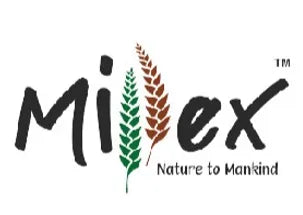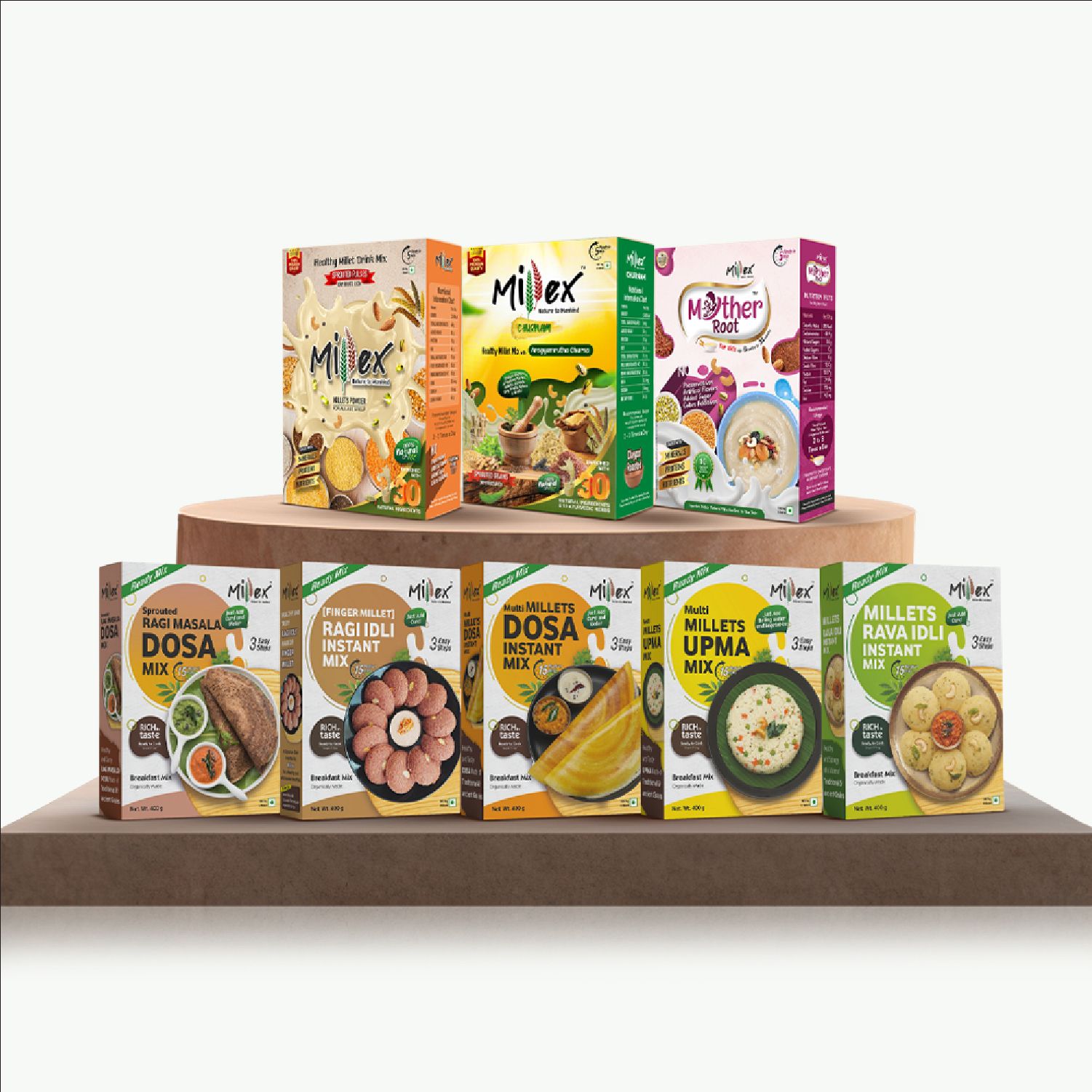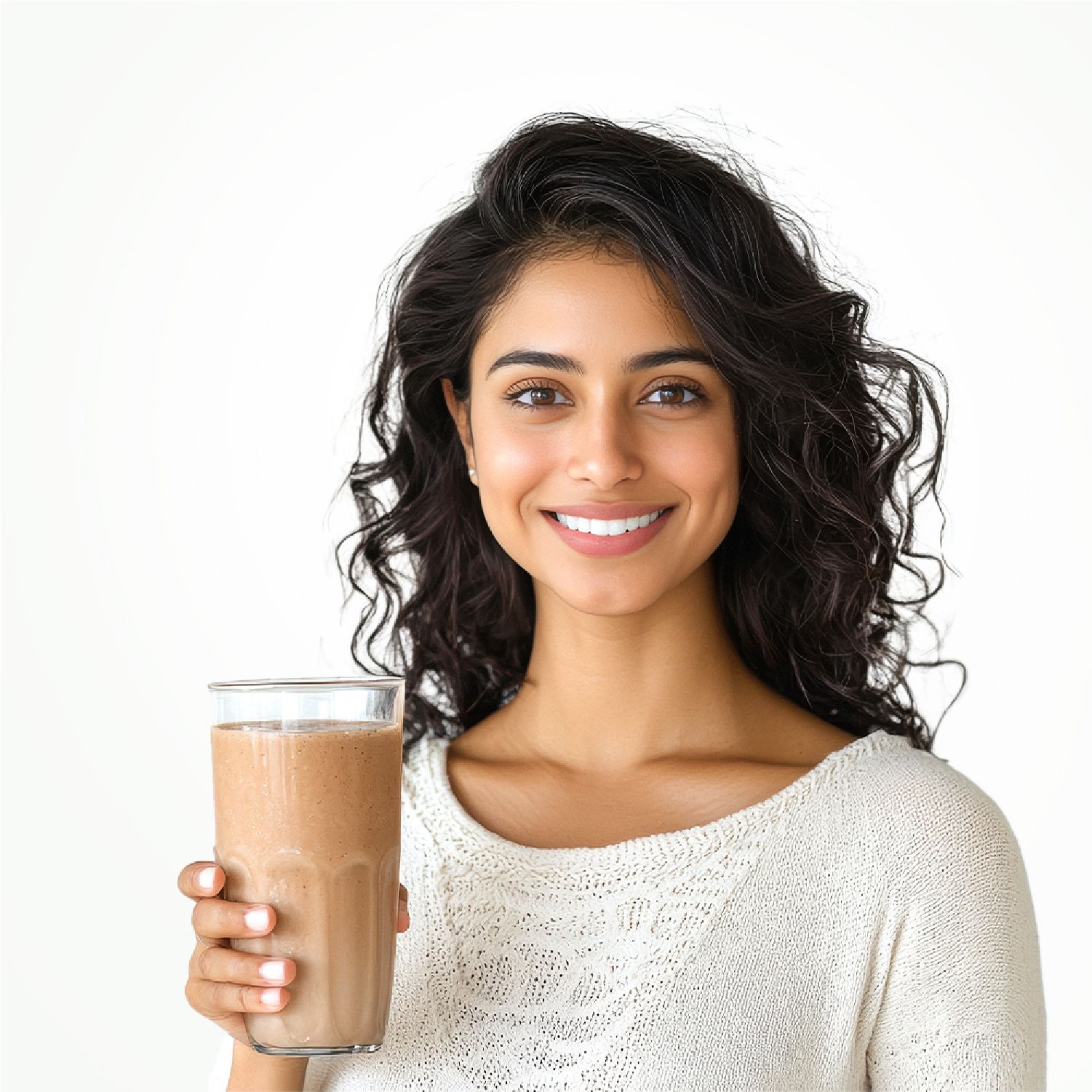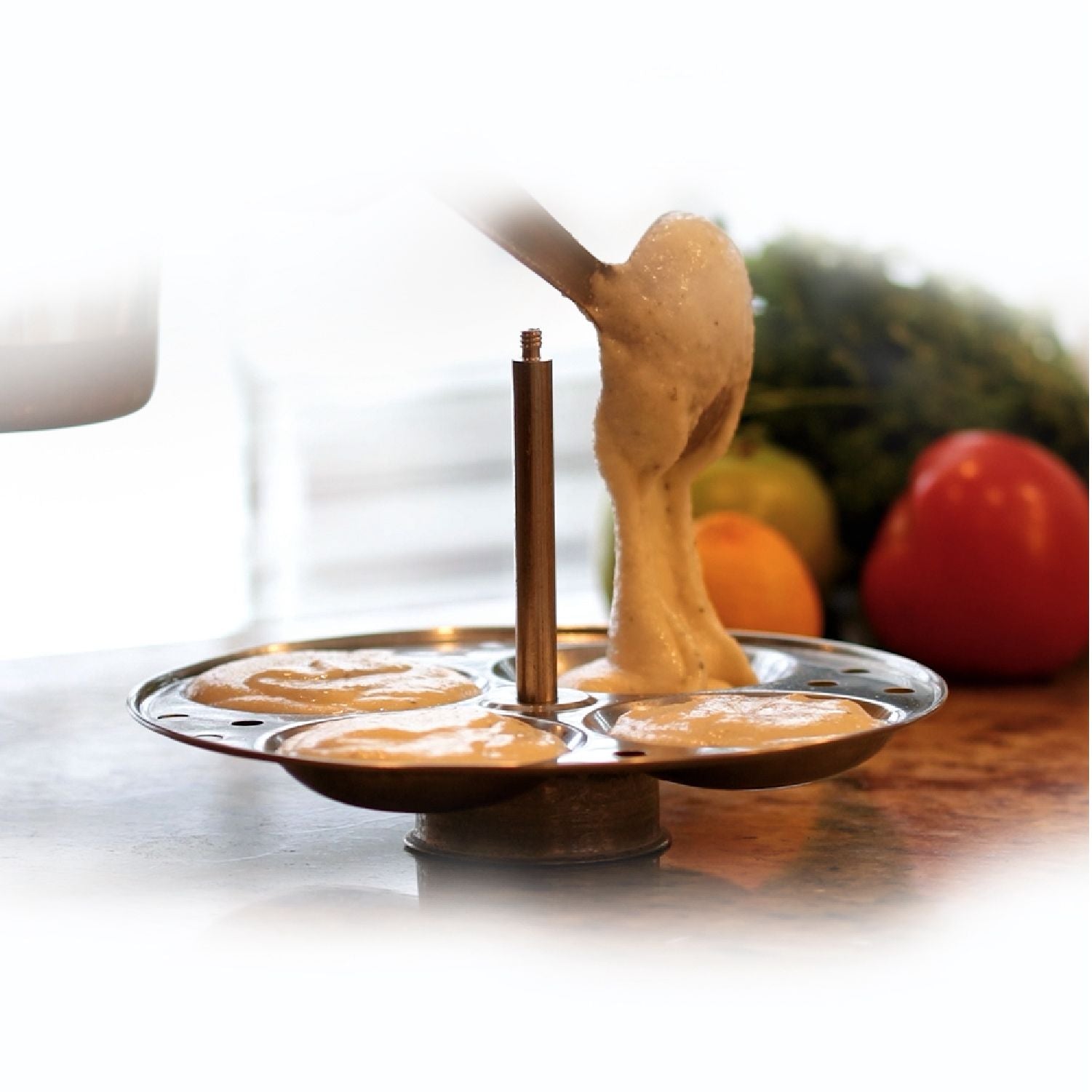9 Types of Millets and Their Health benefits
Within the core of India's food culture, millets are an absolute gold mine of flavor and nutrients. In India, millets are the foundation of a nutritious diet, providing essential nutrients and vast health benefits. These are an overlooked gem in our regular diet.
Now, as people become health conscious, these are in high demand. Their solid demand makes India the world's top millet grower, contributing over 40% of worldwide output. So, will only those who are concerned about their weight go with millet? That's a big no-no.
From infants to older adults, it is necessary to integrate millet into their daily routines. Surprise is, now you will get multiple millets nutrients and benefits in a single pack. Yes! Millex is a top brand in India, delivering nutritious health mixes for people of all ages.
With 30+ natural ingredients combined together, Millex health mixes are a delightful way to satisfy your daily nutrition needs. This article discusses the different types of millets and how each variety of millets benefits people.
Exploring the different types of millets
The question is: How many different forms of millets are there? Not only are these grains versatile in the kitchen, but they also have a wealth of health advantages.
Little Millets:
Little millets are also referred to as kutki in Hindi. Little millet is a great source of multiple minerals. These millets are a type of grain that is low in gluten, sticky, and acid-forming. They aid in promoting health by alleviating many ailments.
These are a good source of numerous antioxidants. Its fat content is also considerably higher.
Magnesium, which is present in little millet, may assist in strengthening heart health. Niacin, or vitamin B3, is present in tiny millet and helps in lowering cholesterol.
Additionally, these millets are rich in phosphorus, aiding energy production, fat metabolism, and bodily tissue repair.
Sorghum:
Sorghum is called the king of millets. It is also referred to as jowar. Sorghum is a rich source of dietary fiber. It significantly enhances digestive health. It helps to maintain healthy blood pressure because it is low in sodium and high in potassium.
Sorghum has many advantages over other grains, such as being gluten-free, a great food for diabetics, a source of protein and vital minerals, good for your bones, and helps you lose weight.
It protects the health of your digestive system. As a great protein source, these millets are the perfect plant-based protein source for vegetarians and vegans. The best part is they are high in antioxidants and more sustainable than other grains.
Kodo Millets:
Kodo millet is also referred to as kodra in Hindi. Kodo millets have been shown to significantly raise serum insulin levels while lowering fasting blood glucose levels. It inhibits weight gain and has a high fiber content.
It is easily digested and has a low glycemic index. Additionally, it contains a lot of nutritional fiber and antioxidants, such as polyphenols. It is an excellent source of minerals, including calcium, iron, magnesium, and zinc, as well as vitamins like vitamin B6, folic acid, and niacin.
For those who want to lose weight or control blood sugar levels, Kodo millets are an excellent addition to their daily routine.
Finger Millets:
Also known as Ragi, finger millets are a great source of calcium, iron, fiber, healthy carbohydrates, and amino acids. They naturally contain a high level of calcium, which helps to build stronger bones in both growing children and elderly adults.
When introducing solid foods to babies and infants, finger millet is the most prominent choice. They provide all the essential nutrients that support your baby's growth.
Frequent consumption of finger millet helps maintain healthy bones, prevents osteoporosis, and may lower the incidence of fractures. Additionally, it prevents premature aging, lowers the risk of diabetes, and helps with weight loss.
Foxtail Millet :
You can find foxtail millet, also known as korralu in India. These are the major ingredients of rice flour. This particular variety of millet is high in carbs, which are essential for preserving the body's healthy blood sugar levels.
It contains a lot of iron as well. Including this variety of millet in your diet will strengthen your immune system as a whole.
Also called kagni or kakum, foxtail millets have been shown to help lower bad cholesterol, prevent aging, and control diabetes. As it consists of high calcium content, it gives you strength. It also aids in controlling blood pressure and promoting healthy weight loss.
Barnyard Millets:
Barnyard millets aren't very familiar to everyone. They are often referred to as Sanwa. These are extremely high in protein and low in calories. Being a great source of fiber, they help avoid acidity, cramping, bloating, and constipation.
These are the best foods for diabetics since they have a low glycemic index. Like other millets, barnyard millet helps prevent anemia due to its high iron content. It also contains nutrients like magnesium and potassium, which are essential for heart health.
The vitamins and minerals in barnyard millet support overall immune function, helping the body fight off infections and diseases.
Pearl Millets:
Also referred to as bajra, pearl millets are high in minerals, proteins, fiber, and carbohydrates. In addition to being high in iron, they also contain magnesium, calcium, phosphorus, manganese, potassium, copper, zinc, chromium, and vitamin B.
It is the only grain with appreciable amounts of chromium. As it has the most folic acid of all the cereals, pregnant women should choose this diet, and newborns as young as six months old benefit greatly.
It has a lot of nutrients and is also readily digested. In addition, it improves constipation, lowers blood sugar, and aids in treating iron deficiency.
Browntop millets :
Browntop Millet is a notable advocate for digestive health. The reason is its high fiber content. Dietary fiber effectively prevents constipation by encouraging frequent bowel movements due to its substantial presence.
Browntop millet has digestive advantages but contains important amino acids that aid in muscle growth and repair. It is a low-calorie grain that fits well with diets focused on weight loss because it provides nutrients without having too many calories.
The antioxidants and other phytochemicals present in brown top millet have been studied for their potential role in preventing cancer by neutralizing free radicals and inhibiting the growth of cancer cells.
Proso Millet :
Proso Millet is a nutritional powerhouse well known for its high protein content. Proso millet is a good source of protein, dietary fiber, vitamins (especially B-complex vitamins like niacin, thiamine, and riboflavin), and minerals (including calcium, iron, phosphorus, and magnesium).
It makes it a great option for muscle growth and repair. As a gluten-free grain, it accommodates those who are sensitive to gluten.
They expand the range of dietary choices for things like fiber. Proso millet also contains significant levels of B vitamins, which support nerve health and enhance cognitive function and general well-being.
The high fiber content of Proso millet promotes satiety, helping you feel full for longer periods, which can aid in weight management and prevent overeating.
Its adaptability in the kitchen enables imaginative culinary experiments, ranging from side dishes to grain bowls.
Delightful ways to integrate millets into your daily routine
Integrating millets has never been boring. Swap traditional grains for millets in dishes like:
- Millet Porridge: Cook millet grains with milk or water and flavor with honey, fruits, or nuts for a nutritious breakfast.
- Millet Pancakes: Use millet flour in your pancake batter for a wholesome twist on a breakfast favorite.
- Salads: Add cooked millet grains to salads for extra fiber and nutrients.
- Stir-fries: Use cooked millet as a substitute for rice or noodles in stir-fry dishes for a satisfying meal.
- Millet Crackers: Bake crispy millet crackers using millet flour for a wholesome snack.
While everyone was running out of time, millet health mixes came to the rescue.
- Trail Mixes: Blend roasted millet flakes with nuts, seeds, and dried fruits to create energy-boosting trail mixes.
- Homemade Granola: Mix millet flakes with oats, nuts, seeds, and honey for a crunchy and nutritious homemade granola.
Summing up
India's diverse millet varieties offer a wealth of health advantages in addition to reflecting the culinary diversity of the nation. Since millet contains a wide range of vital vitamins and minerals, each kind has its own special health benefits.
Millex is an idle of health and vitality, offering a unique blend of nutrition and flavor. Their mission is to revolutionize how we eat, starting with nourishing our bodies with wholesome ingredients. Experience the difference with Millex and start your journey towards a healthier, happier life. Try Millex today and taste the goodness of nature!
1. How many types of millets are there?
There are two main categories of millets: Major Millets (such as Ragi, Bajra, Jowar) and Minor Millets (such as Foxtail, Barnyard, Little, Kodo, and Proso). In total, there are around 9-10 commonly consumed millets.
2. What are the different types of millets and their benefits?
Here are some common millets and their health benefits:
- Ragi (Finger Millet) – Rich in calcium, good for bones and diabetes.
- Jowar (Sorghum) – High in fiber, gluten-free, supports digestion.
- Bajra (Pearl Millet) – Packed with iron, good for heart health.
- Foxtail Millet – Aids weight loss, high in protein.
- Barnyard Millet – Low in calories, good for diabetics.
- Kodo Millet – High in antioxidants, good for gut health.
- Little Millet – Boosts immunity and provides sustained energy.
- Proso Millet – Rich in protein, good for brain health.
3. What is the king of all millets?
Ragi (Finger Millet) is often considered the king of millets due to its high calcium content, making it excellent for bone health and overall nutrition.
4. What are the 5 positive millets?
The five positive millets known for their superior health benefits are:
- Foxtail Millet
- Little Millet
- Kodo Millet
- Barnyard Millet
- Brown Top Millet
These are called “positive millets” because they have low glycemic index, high fiber, and excellent health benefits.
5. Which millet is best for weight loss?
Foxtail Millet, Barnyard Millet, and Kodo Millet are excellent for weight loss due to their high fiber and protein content.
6. Which millet is best for diabetes?
Ragi, Foxtail Millet, and Barnyard Millet are great choices as they help regulate blood sugar levels.
7. Which millet is best for digestion?
Jowar, Kodo Millet, and Little Millet are high in fiber, promoting better digestion and gut health.
8. Can we eat millets daily?
Yes, millets can be eaten daily, but they should be rotated with other grains for a balanced diet. A daily intake of 40-50g of millet is recommended.
9. Which millet is best for kids?
Ragi (Finger Millet) is the best for kids as it is high in calcium, iron, and protein, promoting strong bones and overall growth.
10. Which millet is gluten-free?
All millets, including Ragi, Jowar, Bajra, and Foxtail Millet, are naturally gluten-free, making them great for people with gluten intolerance or celiac disease.






